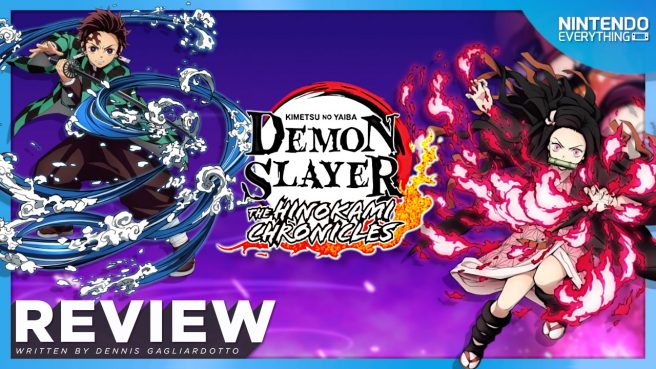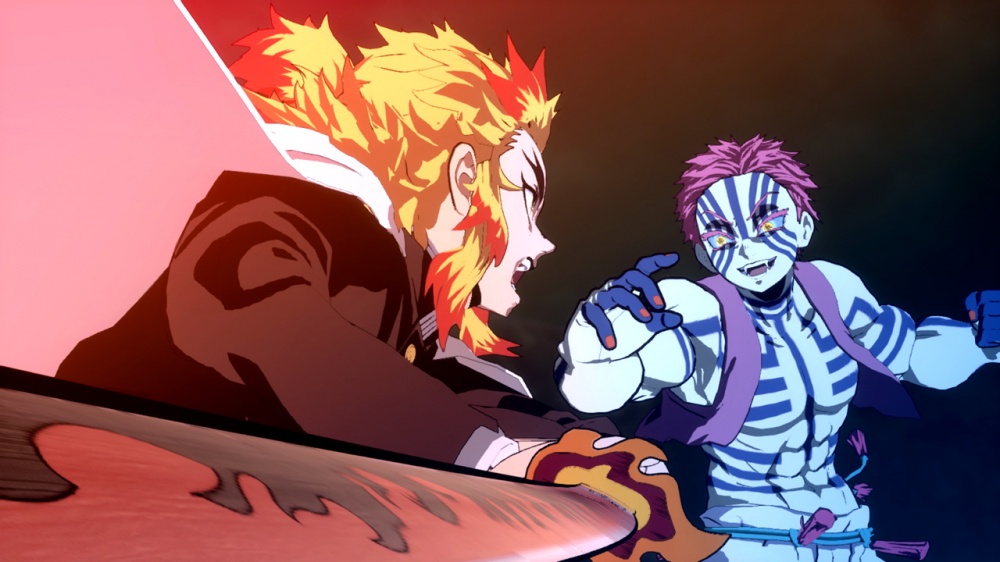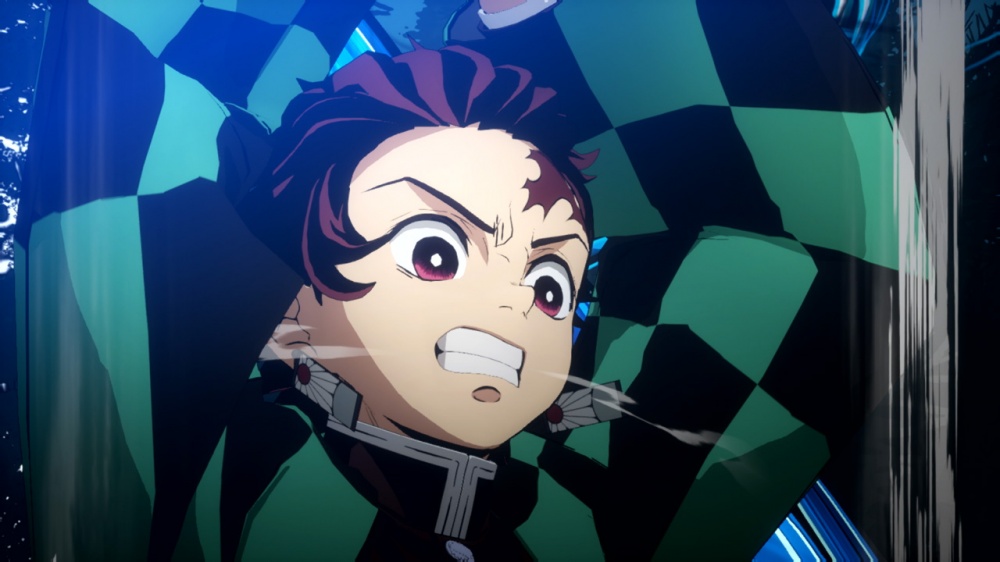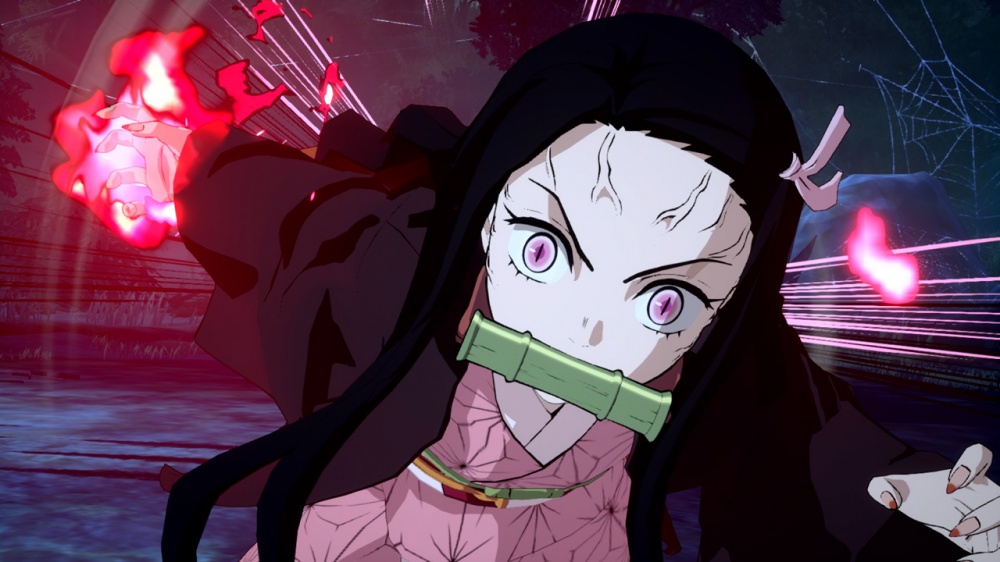[Review] Demon Slayer: Kimetsu no Yaiba – The Hinokami Chronicles
System: Switch
Release Date: June 10, 2022
Developer: CyberConnect2
Publisher: SEGA
Demon Slayer is just the latest to tag alongside the likes of My Hero Academia to record numbers for its manga and animation distributions, and by this point in time, anyone who has even the smallest of interest in anime has probably heard about it. It’s no surprise then that its popularity has led it to getting a game. Demon Slayer: Kimetsu no Yaibi – The Hinokami Chronicles showcases most of what’s been presented in the anime and manga at this point, including its feature film, Mugen Train. With its cast of over thirty characters present and compiled in what is effectively the definitive version of the game with all DLC included, The Hinokami Chronicles gives a hearty round of content for both fans and newcomers alike a great way to play on Switch with an exceptional port.
Demon Slayer: Kimetsu no Yaiba – The Hinokami Chronicles tells the story we all know, following Tanjiro’s tragedy of coming home to his whole family slaughtered by a demon. His sister, Nezuko, is barely alive, but unfortunately turns into a demon herself, leaving Tanjiro to make tough decisions that all hold some sort of repercussion. As he’s training to become a skilled demon slayer, he’ll meet new allies and foes alike as they aim to take down the demons to both avenge and protect the people around him. Throughout the game, you’ll go through all of the biggest events in the series’ history in-game, playing through epic bouts of some of the most iconic fights done in a stunning cel-shaded 3D presentation that at times really just looks like you’re watching through the anime instead of a three-dimensional image with its excellent techniques.
The visuals of The Hinokami Chronicles are rather beautiful and arguably the best showcase for cel-shaded visuals I’ve seen on the Switch so far outside of Zelda: Breath of the Wild, with a crisp presentation that isn’t depreciated by a lack of anti-aliasing, poor resolution, or the like. There are the obvious technical differences compared to other platforms, but it’s otherwise an extremely competent port that holds itself extremely well. Fighting still feels fluid even capped out at 30 frames per second, and this is aided by the fact that the controls themselves are tight and responsive, as well as intuitive and easy to pick up. Every move – your light attacks, heavy attacks, ultimate attacks, boosts, and everything else – feels like it’s exactly where it needs to be and acts how it should, so unlike some other arena fighters (or fighters in general) that have a tendency to overcomplicate things for a sense of depth that ultimately alienates a larger audience, The Hinokami Chronicles still provides the epic nature of Demon Slayer’s fights without compromising control and performance. Every fight you find yourself in is a consistently fun and flashy time on both sides, win or lose.
This presentation of Demon Slayer doesn’t just show itself off most in its battles, however, with menus, UI, and the like all having their own finesse that keeps the entire experience feeling cohesive. Changing or transitioning menus and loading, for example, all have a soft fog that overtakes the screen before fading to black, and it’s appreciated that these smooth transitions and stingers are present rather than an immediate or stuttered screen change. There’s clearly a lot of care put here to ensure that Demon Slayer fans have their first real game be a well-rounded package right out of the gate. Even those that may not have much history with it or are looking to find a good place to start will find plenty to love about The Hinokami Chronicles.
One of the most appealing aspects about The Hinokami Chronicles is the fact that not only does it not feel like your typical or traditional anime video game adaptation, but outside of your epic arena brawls, the story mode is entirely done with fluid 3D animation. Also, instead of just going from fight to cutscene and fight to cutscene once again in a repetitive, shallow, and linear manner that just simulates what’s already been done before through the anime or manga (please see almost every Dragon Ball game ever), you’re able to actually walk around some of the areas in Demon Slayer and collect memory fragments, Kimetsu Points (spendable for unlockables instead of obtaining through challenges), as well as interact with rewards and side-missions that provide not only memories to look back on moments in the series, but bonus collectibles that you can view outside of the game in its Rewards section. Having that 3D environment to walk around in with Tanjiro – Demon Slayer’s protagonist – that isn’t limited to arena matches and being able to really take in all of the well-crafted Japanese environments is something all fans can appreciate, and it makes the entire experience just feel much more immersive and of a higher production quality than most other games like this.
Admittedly, some areas can be rather narrow and it doesn’t leave as much room as one would like for exploration, but overall it’s nice to have that freedom of movement regardless of the size of the area or how linear one may be. Anime-adapted games, unfortunately, have a bad habit of feeling limited and hollow, using the property’s immediate recognition as a selling point in itself with little to no effort put elsewhere, so it’s appreciated that Demon Slayer wants to not only respect the property but expand it as well by offering that depth to keep players engaged throughout rather than hoping they can hold their attention long enough for the next fight. It’s akin to Attack on Titan 2 (incl. Final Battle) where you could do so much more than just use ODM gear to whip around and slash the necks of titans, providing a rich RPG that made the entire universe come to life in more ways than one.
The music included in The Hinokami Chronicles is all beautifully composed as well thanks to the talents of Go Shiina (God Eater, Tales, Code Vein) and Yuki Kajiura (Sword Art Online, Xenosaga), matching up with the fights and environments in a way that complements not only the scenarios but the colors and tones within them. Facing every demon throughout The Hinokami Chronicles up to Mugen Train – Demon Slayer’s first and extremely successful film – music accentuates each battle to its absolute peak, adding to the overall presentation of the game and how it really pops on screen both in handheld and TV mode for the Switch. CyberConnect2 made sure to make every frame count where they could, and it translates extremely well on the Switch hardware making this well worth the wait for those that have other platforms but haven’t picked it up elsewhere in favor of a Switch version.
Plenty within the story helps to unlock content for other modes that can be viewed in its rewards and archives, as well as the character roster itself to help you train and fight both locally and online. With Archives, unlockables are sorted in a way that lets you view everything from your battle attire, profile photos, quotes, and music tracks. Profile pictures are interesting because they’re mainly meant to view specific screenshots in a gallery from a wide array of characters and moments within the anime, unlike the memories which actually take you through a dubbed summarization of the events related to the moment you’re viewing. However, these pictures can be chosen and applied to be part of your Slayer ID which keeps a record of all of your online matches and is seen by everyone you’re matched up with, and these profile pictures alongside your favorite quotes can be showcased in a fun way to show off a bit of personality online.
Training is where things get interesting, however. This isn’t set up like a normal fighting game that has you practice and set options as you play around with combos. Instead, it’s almost like an extra set of missions where you’ll have specific characters from the series take you through ten small activities to complete while fighting with them. This can range from defeating them under a certain time period to executing three grab techniques, using your ultimate, and more. The activities vary from trainer to trainer, yet interestingly this can feel a bit cumbersome and repetitive if you’re going through for 100% completion with each as – while useful at the beginning of the game – they tend to just be reworks of each other and Training Mode can get boring fairly quickly. It never really feels like that much of training either, and instead feels more like a quick set of mini-missions when you’re in the mood for a quick bout with stipulations set in place.
Thankfully, if you do want to practice in what would be perceived as training mode anywhere else, the Practice Mode under VS Mode makes it so you can just practice normally against a character of your choice as a punching bag with stats to view as you fight, or face a CPU in offline VS mode and test your skills from there. There are quite a few matchups that can be done, so strategies can become incredibly deep as you slowly unlock all thirty-plus characters to team up and play around with in Hinokami Chronicles’ 2v2 format. Not all characters are capable of having a partner, however – primarily demons – and instead are balanced with an extra bar of health and advantageous movesets that are good for getting out of sticky situations.
Overall, the Switch version of Demon Slayer: Kimetsu no Yaiba – The Hinokami Chronicles is an extremely well done port that carries all the weight and fun more or less the same as it was on other platforms almost a year ago with little sacrifice shown, and while I’d still highly recommend playing this type of game on a TV with either a Pro Controller or a controller with a similar form factor, those primarily playing in handheld will still have a lavish experience to appreciate the property moving into the video game space in a big budget way for the first time. Having the ability to go back and view moments from the series as well is a big plus because you can see in a more detailed fashion exactly how everything played out versus how those same scenarios have been adapted for the game. In a lot of ways, truthfully, Demon Slayer: Kimetsu no Yaiba – The Hinokami Chronicles feels like a museum to celebrate the series’ impact with all of its collectables and ways it presents it all, and while it does a lot of things great compared to most other adaptations (especially for a debut title), there is certainly still room for improvement to make a Demon Slayer game that still excels better than most. Personally, I’d love to see Demon Slayer take an action RPG approach, but so far as an arena brawler it does a fantastic job at pitting characters against each other in a cinematic fashion that really complements the art direction and atmosphere that’s made Demon Slayer so captivating over the last couple of years.
The Verdict

Demon Slayer: Kimetsu no Yaibi – The Hinokami Chronicles is an arena fighter that excels well more than a lot of others we’ve seen compared to other anime video game adaptations so far, and whether one’s been a long-time fan of the series or looking to get into the property, it’s a great place to start and dive into with plenty of content that also won’t overwhelm for better or for worse. Those wanting to squeeze every ounce of what the game has to offer will likely be looking at over 25 hours of gameplay, and though a casual playthrough will provide significantly less time than that, it’s still a worthy investment to see the world of Demon Slayer through a different perspective. Games adapted from anime and manga still have a while to go before we get one that’s built from the ground up with actual care and depth, but Demon Slayer: Kimetsu no Yaiba – The Hinokami Chronicles shows that it can be done in a way that’s faithful without having to be uninventive and boring, and it further proves that Switch is plenty capable of running these sorts of titles without many sacrifices.
Demon Slayer: Kimetsu no Yaiba – The Hinokami Chronicles copy provided by the publisher for the purposes of this review.



